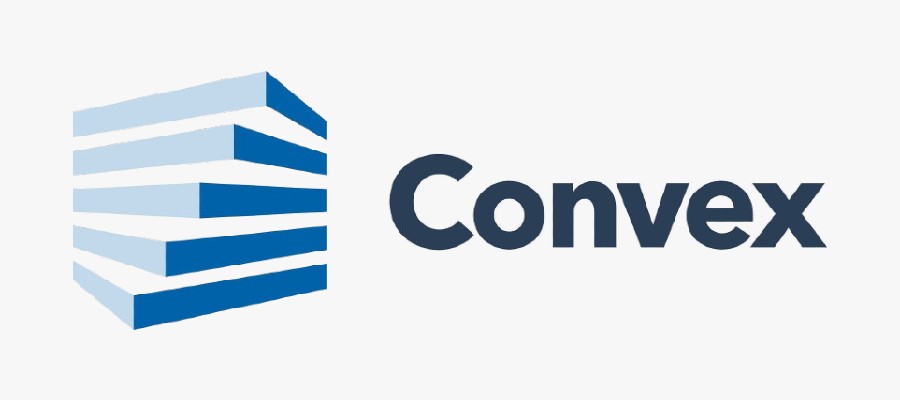As a commercial HVAC business owner or sales manager you’re always looking for new ways to grow your customer base. One of the most overlooked and powerful tools in your toolbox? Warranty expiration dates. These often forgotten dates get lost in the shuffle of everyday business but if you remember them they’re a goldmine for new contracts and ongoing revenue.
Introduction: The Hidden Opportunity in Warranty Expiration Dates

Warranties on commercial HVAC systems aren’t just a safety net for customers – they’re a goldmine for new sales. Once a warranty expires customers are left without coverage and are prime candidates for service agreements or system upgrades. By tracking these dates in advance you can offer timely solutions to customer’s problems that make them feel as though they’re more than just a number to your team.
Due to the high costs of repairs and replacement, when property owners and managers find out that their systems are no longer covered, they panic and look for service- leading them to Google, their network, and other resources that could mean lost revenue for your business.
But if you position your HVAC company as the long-term proactive partner who offers peace of mind for the entire life of their system, you’ll be ahead of the competition and on your way to continued service agreements and even new contracts.
Understanding Warranty Expiration Dates in Commercial HVAC
What are Warranty Expiration Dates?
Just so we’re all on the same page, warranty expiration dates are the end of a manufacturer’s or service provider’s coverage for HVAC systems. Most offer 10- 15 year warranties but these vary by Manufacturer.
This is when the customer must decide to continue with maintenance plans, upgrade, or go without coverage.
Why Warranty Expirations Matter for Sales Teams
For your sales team, these dates are a sign that customers are entering a critical phase of their HVAC system’s life cycle. As warranties expire, the risk of breakdowns increases, so customers will need more service, repairs, or replacements.
By tracking this data, you can predict when they may begin to feel some concern about their system and build a relationship with them before competitors do.
How Warranty Expiration Dates Help You Identify New Business

Proactively Contacting Prospective Clients
Rather than waiting for customers to come to you after their system breaks down, contact them before the warranty ends.
You can use prospecting software and lead generation tools like Convex to find warranty data, and in 3- 5 minutes, you can use Generative AI to send personalized messages to decision-makers.
This way, you position yourself as the proactive service provider ready to help before problems arise- gaining their trust and opening the opportunity for future business.
Leveraging Warranty Data to Build Relationships
If you’ve just installed a system, make sure you have sales training in place to offer service, maintenance, and support plans. You can use the warranty data for outreach triggers, set up automated emails to different customer segments by quarter, or send personal reminders and special service offers as the date approaches.
Many HVAC companies have taken advantage of this approach to convert warranty expiration data into long-term service agreements and new sales through equipment upgrades- it’s a quick way to build a “snowball effect” into your sales pipeline.
Steps to Use Warranty Expiration Dates for Targeted Sales
Step 1: Gather Warranty Data
Gather and organize warranty expiration data from current customers and potential leads. If your CRM has this built-in, start there. But that won’t give you access to the warranty data in your marketplace; for that, you need tools like Convex.
Convex’s Atlas and Engage tools are designed to help you discover properties that need new HVAC units, repairs, maintenance, or service. Plus, they help you craft personalized messages to connect with decision-makers about those systems!

Here’s how it works.
Log in and Check Signals: Log into Convex and check the “Signals” category—our proprietary buyer intent data—to see who’s “in-market” and ready to buy.
Search for Properties, Accounts, and Contacts: Search for properties or accounts that align with your products and services. This could be anything from a specific property type (e.g., hospital, airport, or manufacturing building) to individual contacts, job titles, account names, or tenant information. Once you find the buildings you’re looking for, Convex’s property intelligence will show you key insights such as permit histories, building age, square footage, rooftop equipment views, ownership, transaction details, and equipment data (including warranties and contracts), making it easier to identify contacts and turn them into leads.
Leverage Generative AI for Personalized Outreach: Once you’ve found the ideal building or decision-maker, click on the person you’d like to contact at the property, and with just two clicks, use Generative AI—trained on buyer signals, firmographic data, and your company’s contact data—to send a personalized email or draft a phone script.
Automate Follow-ups and Manage Leads: After outreach, set up automated follow-ups or reminders and track the lead in your CRM. Convex also allows you to export lists of prospects, assign stages, tag coworkers, and assign dollar values to leads, offering CRM functionality for lead management – but our tools also integrate with sales pipeline management tools like Hubspot and Salesforce to make it easier for you to manager the entire customer lifecycle.
That’s why we call Convex an “all-in-one” solution to help you efficiently manage every aspect of your HVAC sales team.
Step 2: Prioritize High-Value Expiring Warranties
If you’re not using Convex, the next thing you’ll want to do is focus on customers with large systems or big contracts. These customers will need attention when their warranties expire, and you have the opportunity to get high-revenue contracts.
Next, create a second tier by customer segmentation. It’s up to you how you prioritize this list, but you may want to consider:
Warranties that expire in the next six months.
The performance history of the equipment.
The age of the equipment
Or any known issues with the systems you’ve installed or serviced.
This lets you craft messages for cold outreach, marketing campaigns, and other sales opportunities scheduled for 3, 6, 9, or even 12 months down the line, helping you maintain a steady stream of revenue.
Step 3: Create a Tailored Sales Pitch
Leverage expiring warranties as an opportunity to design special offers, service programs, and communications that emphasize the advantages of system upgrades or extended service agreements.
Emphasize these changes’ potential return on investment (ROI) by focusing on cost savings, improved reliability, reduced downtime, and enhanced efficiency. These factors are crucial for commercial properties, especially as inflation and economic uncertainty instill trepidation in the market.
Step 4: Automate Outreach and Follow-Up
Now, use marketing automation, email, and outreach tools to ensure consistent communication with your customers and lead segments. Many HVAC companies find that creating a marketing calendar with seasonal promotions, planned mailers or newsletters, and other automated messages helps them schedule messages in advance, meaning one less thing to worry about during peak seasons.
Step 5: Track Customer Data and Feedback
Finally, customer feedback can be tracked by capturing data on how recipients respond to outreach efforts, what systems are trending out of warranty range or reaching end-of-life cycles, or if specific issues are related to regional weather patterns for certain equipment brands.
Use this information to adjust your sales strategies year-over-year and optimize future campaigns. Tracking helps ensure that when the time comes around next year (or three years from now), you’ll be prepared with the right message for the right customer at the right time.
Best Practices for Converting Expiring Warranties into New Contracts

Be Proactive, Not Reactive
Reach out to customers before their warranty runs out! If you wait for them to call in, you may lose their business to a proactive competitor. When people are faced with an HVAC emergency, they turn to the path of least resistance—which may not be you if you’re not “top of mind.”
Build relationships with your customers so you don’t miss out on these opportunities.
Offer Value-Added Services
Why not sell extended service agreements, preventive maintenance, and system upgrades to keep your clients’ systems running smoothly? Regular preventive maintenance can catch potential issues before they turn into big headaches, saving your clients time and money in the long run.
Plus, with system upgrades, they’ll have access to the latest technology, boosting their productivity and overall satisfaction with your services!
Build Trust and Maintain Relationships
I know I keep bringing this up, but really, “relationship” is everything when it comes to staying top of mind. If you can be there for them in a pinch during an HVAC emergency, they’re way more likely to think of you the next time something comes up!
But emergencies may only happen every few years. Use the time in between to educate your customers on the importance of proactive service after warranty expires. Show them the cost savings your service plans provide, and make sure they know you’re always there for them.
Trust is built when customers know you have their best interests at heart.
Tools to Track Warranty Expirations for HVAC Businesses
Top Platforms for Tracking Warranty Data
Tracking warranty expiration dates is easy with tools like Convex Atlas, CRMs and service management software. These platforms will help you organize and manage the dates so you can reach out on time.
(can you provide some context to other tools that track warranty data in the way Convex does? I’m having a hard time separating internal and external tools that do this?)
Choosing the Right Tool for Your Business
There aren’t a ton of tools out there that provide this data as a service, so picking the right one should be pretty straightforward. First, check out how each option fits in with your current sales and marketing systems. Is it scalable? And what’s the cost compared to the potential ROI? What features does the platform include? Will those help you accelerate sales and revenue or are they just distractions that will bog down your team?
Picking the right one is all about keeping your main goal in mind. Once you nail that down, making the decision gets a lot easier!
Case Study: How a Commercial HVAC Company Boosted Revenue by Targeting Expiring Warranties

Comfort Systems leveraged Convex to double its business within four years by optimizing its prospecting efforts and dramatically decreasing the time needed to onboard new sales representatives.
Atlas enabled targeted property searches of equipment asset data, warranties, and contracts, saving hundreds of prospecting hours and improving pipeline efficiency.
Because of this, new hires are hitting their performance goals in just two to three months instead of the six to nine months it used to take. That’s why Comfort Systems has made Convex a key part of its growth strategy.
For more details, you can check the full case study here.
Conclusion: Turn Expiring Warranties into New Business Opportunities
As I stated in the opening of this article, warranty expiration dates are a goldmine for commercial HVAC companies looking to make new sales and generate long-term contracts.
By tracking the dates, reaching out proactively, and offering customized solutions, you can turn an underutilized asset into a revenue generator.
Ready to see how you can grow with equipment asset and warranty data? Schedule a demo of Convex today to learn more.
Share





